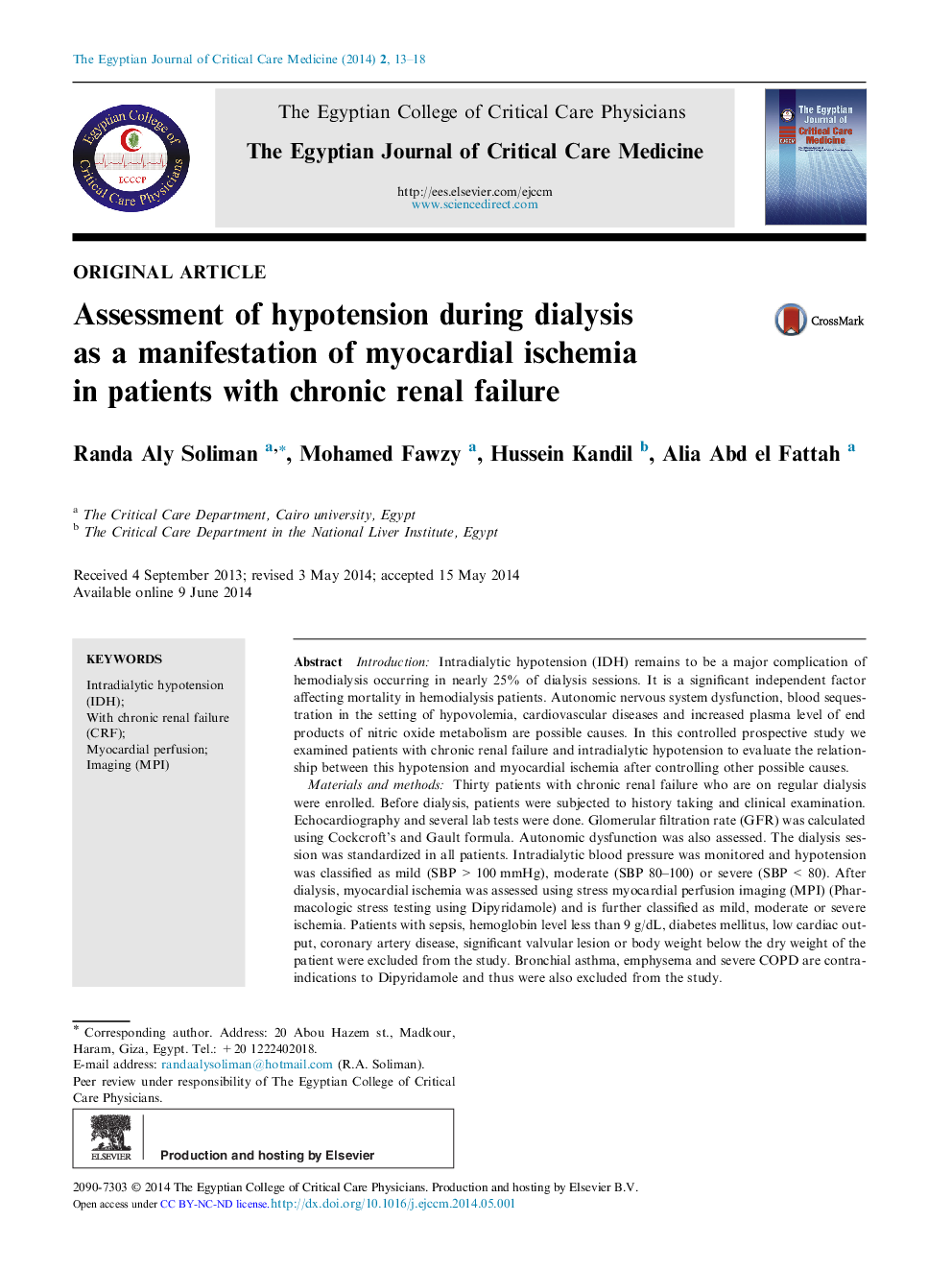| Article ID | Journal | Published Year | Pages | File Type |
|---|---|---|---|---|
| 2910894 | The Egyptian Journal of Critical Care Medicine | 2014 | 6 Pages |
IntroductionIntradialytic hypotension (IDH) remains to be a major complication of hemodialysis occurring in nearly 25% of dialysis sessions. It is a significant independent factor affecting mortality in hemodialysis patients. Autonomic nervous system dysfunction, blood sequestration in the setting of hypovolemia, cardiovascular diseases and increased plasma level of end products of nitric oxide metabolism are possible causes. In this controlled prospective study we examined patients with chronic renal failure and intradialytic hypotension to evaluate the relationship between this hypotension and myocardial ischemia after controlling other possible causes.Materials and methodsThirty patients with chronic renal failure who are on regular dialysis were enrolled. Before dialysis, patients were subjected to history taking and clinical examination. Echocardiography and several lab tests were done. Glomerular filtration rate (GFR) was calculated using Cockcroft’s and Gault formula. Autonomic dysfunction was also assessed. The dialysis session was standardized in all patients. Intradialytic blood pressure was monitored and hypotension was classified as mild (SBP > 100 mmHg), moderate (SBP 80–100) or severe (SBP < 80). After dialysis, myocardial ischemia was assessed using stress myocardial perfusion imaging (MPI) (Pharmacologic stress testing using Dipyridamole) and is further classified as mild, moderate or severe ischemia. Patients with sepsis, hemoglobin level less than 9 g/dL, diabetes mellitus, low cardiac output, coronary artery disease, significant valvular lesion or body weight below the dry weight of the patient were excluded from the study. Bronchial asthma, emphysema and severe COPD are contraindications to Dipyridamole and thus were also excluded from the study.ResultsTwenty patients had no or mild intradialytic hypotension whereas ten patients had moderate or severe hypotension. Among the first group, only two patients (10%) were found to have myocardial ischemia, while in the latter group, seven patients (70%) had myocardial ischemia that’s mostly moderate (p = 0.002). Stress induced LV dysfunction was also significantly prevalent in patients with moderate or severe intradialytic hypotension as opposed to other group (p = 0.002) LVED.ConclusionsPatients with CKD and regular hemodialysis who experience moderate or severe intradialytic hypotension have significantly higher prevalence of myocardial ischemia and stress induced myocardial dysfunction, than those who experience no or mild intradialytic hypotension.
